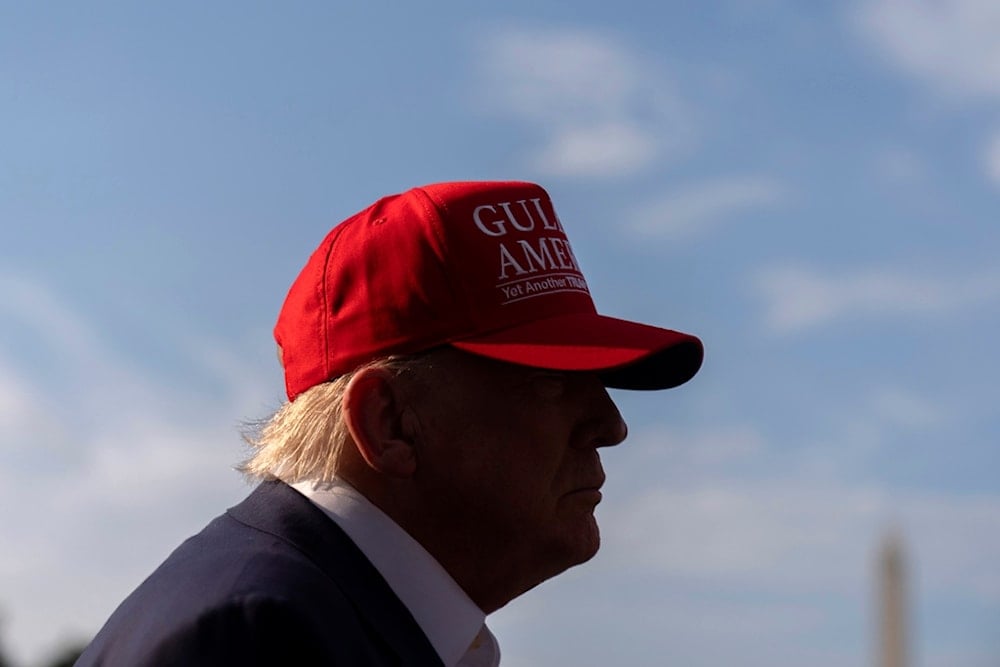Supreme Court greenlights Trump's plot for mass federal layoffs
The US Supreme Court has allowed the Trump administration to proceed with mass federal layoffs under a controversial executive order, overturning a lower court's block. Federal unions warn of major disruptions.
-

US President Donald Trump speaks to the media before walking across the South Lawn of the White House to board Marine One en route to Joint Base Andrews, Md., and on to Florida, on July 1, 2025, in Washington. (AP)
The Trump administration is set to move forward with plans to dismiss tens of thousands of federal employees after the US Supreme Court lifted a lower court’s block on a sweeping executive order, marking a significant victory for President Donald Trump’s long-running campaign to reduce the federal workforce.
As reported by Politico, the court's 8-1 ruling on Tuesday granted the administration’s emergency appeal to enforce a February 11 executive order directing federal agencies to initiate large-scale "reductions in force" (RIFs). The justices emphasized that the legality of specific agency plans remains open to litigation, but they allowed the administration to begin implementing the order immediately.
The unsigned decision from the Supreme Court nullifies an injunction issued in May by US District Judge Susan Illston. Her ruling had blocked 21 federal agencies from implementing the executive order, citing potential violations of federal law. Illston's injunction halted key preparatory steps for mass layoffs, such as developing reorganization plans, issuing new RIF notifications, and executing ongoing layoffs.
Justice Ketanji Brown Jackson was the sole dissenter, writing a 15-page opinion criticizing the court’s majority for enabling what she called a legally dubious action. “President Donald Trump is unleashing a ‘wrecking ball’ on the federal government,” she wrote, accusing the court of enthusiastically approving executive overreach without sufficient legal scrutiny.
Alarms raised over job cuts
The layoff plans have triggered legal challenges from federal employee unions, several US cities and counties, and advocacy groups. The American Federation of Government Employees and other unions expressed concern over the court’s decision, stating that it jeopardizes essential public services.
"This decision does not change the simple and clear fact that reorganizing government functions and laying off federal workers en masse haphazardly without any congressional approval is not allowed by our Constitution," the unions said in a statement following the ruling.
Agencies affected by the blocked order included the Departments of State, Treasury, Transportation, Veterans Affairs, and the Social Security Administration.
Broader implications, cases
This Supreme Court ruling marks another in a series of decisions favoring the Trump administration’s policies. Less than two weeks ago, the court narrowed the authority of district court judges to issue nationwide injunctions, further limiting judicial checks on federal actions.
Trump administration officials praised the ruling as a validation of executive authority. At the same time, White House spokesperson Harrison Fields called it "another definitive victory for the President," accusing "leftist judges" of attempting to obstruct government efficiency.
Separately, US District Judge Myong Joun in Boston blocked a planned layoff of 1,300 employees at the Education Department in May, arguing that the downsizing could "cripple the Department" and hinder services for students with special needs and civil rights investigations. That decision remains pending before the Supreme Court.
Judge Joun, a Biden appointee, concluded that the proposed cuts aligned with Trump’s broader goal of eliminating the Education Department, a move not authorized by Congress.
DOGE: Where it started
The executive order directed agency heads to coordinate with the Department of Government Efficiency (DOGE), a cost-cutting initiative previously headed by Tesla founder Elon Musk. Under this directive, DOGE was granted a major role in overseeing staff eliminations across executive branch agencies.
The layoffs already underway include more than 20,000 probationary employees, many of whom had served less than two years or had recently transferred roles, as part of the first phase of the administration’s plan.
The Supreme Court’s decision to allow the Trump-era federal layoffs to proceed marks a pivotal moment in the administration’s efforts to restructure the federal government. While the full legal and political ramifications remain unclear, federal workers, unions, and agencies are bracing for potentially unprecedented staffing cuts.
Read more: Record number of US civil servants job hunting amid DOGE layoffs

 4 Min Read
4 Min Read










